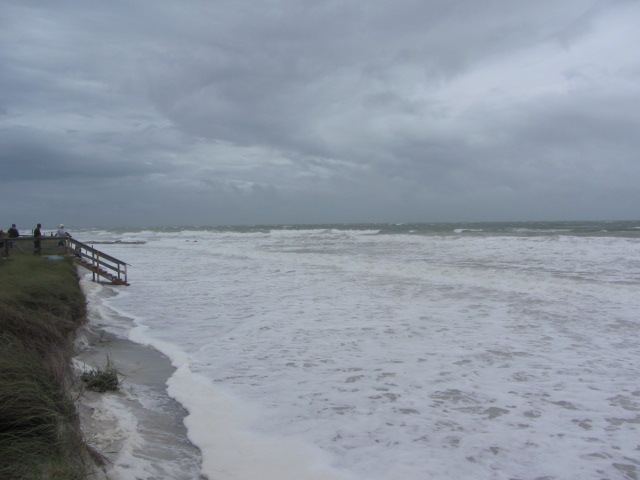Summer Sea Levels Rising Fast Along Florida's Gulf Coast

Summer high tides are getting higher in the eastern Gulf of Mexico, boosting the destructive power of hurricanes, a new study finds.
The trend is strongest in Florida, such as in Key West, where tidal flooding regularly inundates low-lying city streets. Summer sea levels are now 1.8 inches (4.5 centimeters) higher than before 1993, and that's on top of the contribution from global sea level rise, according to the study, published Jan. 3 in the journal Geophysical Research Letters. On the flip side, winter tides are now lower, the study finds.
Put more simply, in the past two decades, summer sea level has increased on Florida's Gulf Coast by a total of 4 inches (10 cm). "Sea level is rising because of global warming, but on top of this, the seasonal cycle is also changing," said Thomas Wahl, lead study author and a coastal engineer at the University of South Florida in St. Petersburg. "We don't know whether this is climate change or part of a natural cycle, but this increase over the last 20 years is not found elsewhere in the world."
All coastlines undergo seasonal cycles in their tides. Summer tides are higher than winter tides because of several factors, such as the difference between summer and winter water temperatures; rainfall and seasonal changes in air temperature; and wind. (For example, cold water takes up less volume than warm water, so the tides in winter are lower.)
Wahl and his colleagues discovered the dramatic change by analyzing tide records collected since 1900 from 13 Gulf Coast cities, from the tip of Florida to the Texas coast. In the past century, many coastal Florida cities have undergone significant sea level rise — faster than the global trend. For instance, sea level rose 9 inches (22 cm) in Key West during the last 100 years. But until now, no one had closely looked at seasonal tidal cycles in the Gulf.
Watch out, Florida
Not all Gulf Coast cities saw the same extreme changes as Florida, the study reports. No significant results were found in the western Gulf of Mexico, including tide gauges in Texas and Louisiana. Only coastal cities east of Alabama showed a significant change in summer and winter sea level cycles since the 1990s.
Sign up for the Live Science daily newsletter now
Get the world’s most fascinating discoveries delivered straight to your inbox.
Wahl and his co-authors think the summer tides are getting higher and winter tides are getting lower because summers and winters in the Gulf of Mexico are also becoming warmer and colder, respectively. "We found similar cycles in the air temperature and air pressure in the eastern part of the Gulf," Wahl said.
Though the tidal changes are small — just a few inches — the effect does increase the risk of storm-surge flooding from hurricanes and tropical storms, Wahl said. [Video: Storm Surge: The Deadliest Part of a Hurricane]
"If a hurricane hits the coastline and the base water level is already 5 to 10 centimeters [2 to 4 inches] higher than it was 20 years ago, this leads to a higher storm-surge water level," Wahl told Live Science.
The U.S. Geological Survey released a hurricane-induced coastal erosion map for the Gulf Coast and East Coast on Jan. 7, and predicts that 27 percent of Gulf beaches are at risk of flooding in a Category 1 hurricane.
"Hurricanes are not required for significant coastal change in the Gulf region," the report concluded. "Waves and storm surge associated with tropical storms and winter cold fronts provide sufficient energy to put low-elevation beaches and dunes at risk due to erosion."
Email Becky Oskin or follow her @beckyoskin. Follow us @livescience, Facebook& Google+. Original article on Live Science.










